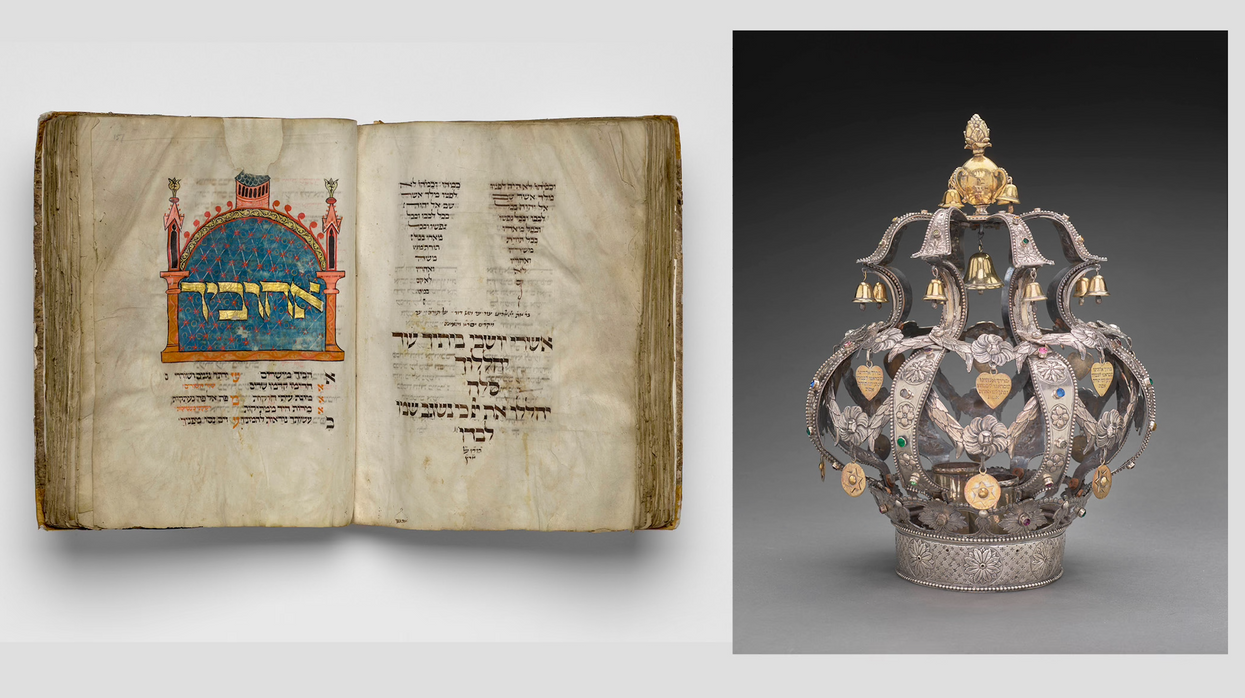MFAH Broadens Its Diversity Efforts, Permanent Gallery for Judaic Arts Now Open

'The Montefiore Mainz Mahzor,' c. 1310– 20, German in origin; and late 18th- to early 19th-century Torah crown, Polish in origin
IN 2018, THE Museum of Fine Arts, Houston acquired a rare and unusual object — an illuminated medieval manuscript, or mahzor, consisting of 299 leaves of prayers to be recited in synagogue on Jewish holidays. At that time, the museum had more than 60,000 Christian, Buddhist, Muslim, Hindu and Confucian objects in the collection, but only two objects that reflected Jewish culture. “And so, the big question was, ‘Why don’t we have more?’” says MFAH director Gary Tinterow.
Since then, with help from members of the Houston community, the museum has acquired 30 Judaic objects, many of which are on display in the new Albert and Herzstein Gallery for Judaica, an endowed exhibition space dedicated to historical objects and works of art made for Jewish communities around the world for the practice of their faith.
Unlike Christian or Islamic art, Judaic art is incredibly rare. Forced migration, pogroms and the Holocaust gave rise to the destruction of Jewish culture, and such objects were often made with precious materials that might be melted down to help a family escape to safety in another country. The aforementioned mahzor is featured in the new gallery, its detailed illustrations and meticulous red and black Ashkenazi script still legible and a joy to look at, despite wear and tear, alterations, and censorships the book has endured in its journey from 13th-century Germany to 21st-century Houston.
Visitors to the gallery will notice the artistic style of Judaic art often reflects where on the planet an object was made, be it North Africa, Europe, or Asia. Beth Schneider, former education director for the MFAH, who works with the MFAH as a consultant to its Judaic initiative and related programming, points out that several objects in the gallery were made by Christian artists in Europe for the Jewish community. And a torah mantle made in Turkey in the 19th century with crescent moons, flowers, and exotic birds sewn with golden gift-metal thread into its dark blue velvet cloth reveals the confluence of Islamic and Jewish artistry. “Even though Jews were often restricted to ghettos or not allowed to live permanently in cities, there was still an engagement with the larger artistic community that’s exhibited in these objects,” says Schneider.
With its mixture of the opulent and the everyday, gentle lighting, and videos of synagogues from around the world, the Gallery for Judaica is a expertly researched and curated environment designed to encourage introspective viewing and promote dialogue among curious visitors. That so much history is contained in a relatively small space is a testament to the rarity of these objects, and the survival of the Jewish diaspora.























